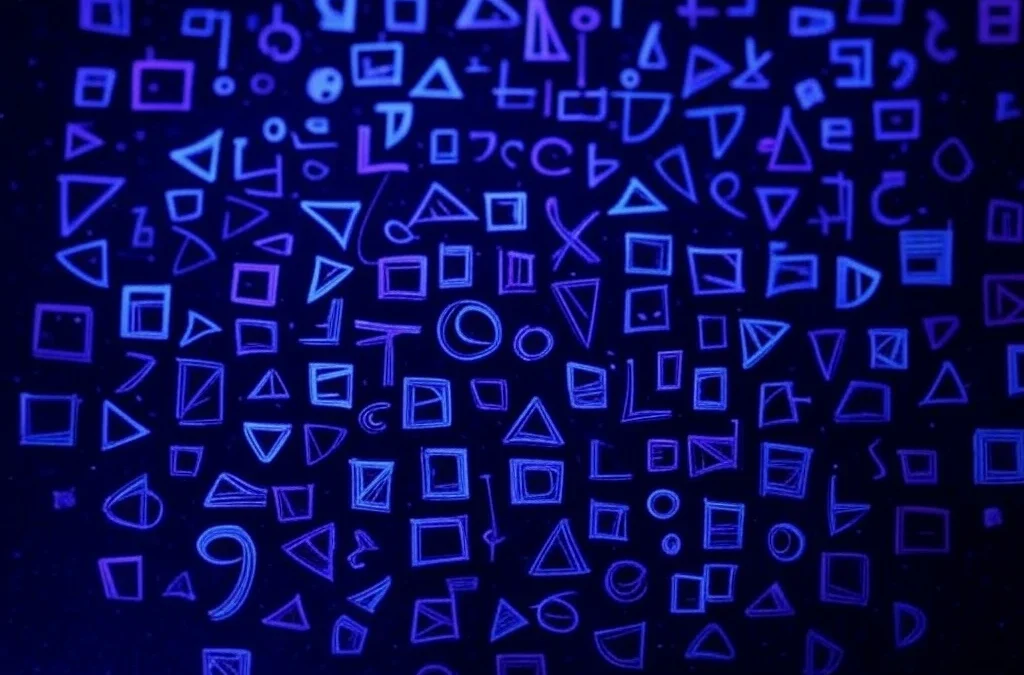Deception, a complex and multifaceted concept, plays a pivotal role in both historical events and everyday interactions. It encompasses a wide range of tactics, from white lies to elaborate schemes, all designed to mislead or manipulate. This article delves into the top 30 examples of deception, shedding light on the intricate ways individuals and institutions use misinformation to achieve their goals. By understanding these examples, readers can gain insights into the psychological, social, and ethical dimensions of deceit.
Each example in our list is accompanied by an analysis of its meaning and impact, offering a deeper understanding of the motivations behind deceptive behaviors. From the Trojan Horse to modern-day digital fraud, these cases illustrate the diverse methods and reasons for deception. Whether used for personal gain, to protect someone’s feelings, or in strategic maneuvers during conflict, deception has shaped human history and continues to influence our daily lives. Join us as we explore the art of deception, unmasking the complexity behind the lies and the truths they conceal.
What is Deception?
Deception is the act of misleading or deceiving someone by presenting false information or concealing the truth to manipulate beliefs, decisions, or actions. It encompasses a broad range of practices, including lies, fraud, trickery, and disguises, aiming to influence someone’s perception of reality for various motives, such as personal gain, protection of oneself or others, or strategic advantage. Deception can occur in numerous contexts, from personal relationships to political strategies and business dealings, making it a critical concept in psychology, sociology, and ethics.
Deception often involves creating a false narrative or altering information to make it more palatable or convincing to the target audience. This manipulation can be achieved through direct lies, omission of facts, exaggeration, or any other means that leads someone to believe something that is not true. The effectiveness of deception depends on the deceiver’s skill in crafting their message and the receiver’s willingness or ability to question or verify the information.
In psychological terms, deception plays a significant role in understanding human behavior, trust dynamics, and the mechanisms of social interaction. It raises important ethical questions about the justification and consequences of misleading others, whether in personal relationships, professional environments, or international relations. The study of deception also extends to non-verbal cues and digital platforms, where the absence of physical presence can both facilitate and challenge the act of deceiving.
The complexity of deception lies in its dual nature; it can be both destructive and protective, serving as a tool for harm or a mechanism for safeguarding well-being. Its multifaceted implications make it a subject of interest across disciplines, including psychology, criminology, information technology, and philosophy. Understanding deception is essential for navigating the social world, as it equips individuals with the knowledge to detect and protect against deceit, fostering healthier and more transparent relationships and societies.
The Best Examples of Deception
1. The Trojan Horse (Historical Deception)
An iconic example from ancient Greek mythology, where the Greeks deceived the Trojans into bringing a giant wooden horse inside the walls of Troy, believing it to be a peace offering. Hidden inside were Greek soldiers who emerged at night, opening the gates for their army and leading to the fall of Troy. This example epitomizes strategic deception used in warfare, highlighting how trust can be exploited for tactical gain.
2. Ponzi Schemes (Financial Deception)
Named after Charles Ponzi, who in the 1920s duped investors into a scheme promising high returns with little risk. The returns to initial investors were paid from the contributions of new investors, not from profits. This form of financial deception illustrates how greed and the promise of easy money can blind individuals to the reality of their investments, leading to significant financial loss.
3. Fake News (Informational Deception)
The deliberate creation and spread of misinformation or hoaxes, particularly on social media, to mislead readers, influence public opinion, or obscure the truth. This modern form of deception demonstrates the power of information manipulation and its impact on political, social, and personal beliefs and decisions.
4. Camouflage (Natural Deception)
Used by animals and military forces to blend into their surroundings, camouflage is a method of deception that conceals the true nature or location of an individual or object. This survival strategy illustrates deception as a means of protection or a tactic to gain the upper hand in predatory or combat situations.
5. Identity Theft (Personal Deception)
The fraudulent acquisition and use of someone’s private identifying information, usually for financial gain. This type of deception highlights the vulnerabilities in personal and digital security, and the lengths to which individuals will go to exploit others’ identities.
6. Phishing Scams (Cyber Deception)
Fraudulent attempts to obtain sensitive information such as usernames, passwords, and credit card details by disguising as a trustworthy entity in an electronic communication. Phishing exemplifies deception in the digital age, where the manipulation of trust can lead to significant personal and financial harm.
7. Double Agents (Espionage Deception)
Individuals who pretend to spy on a target organization for one country or organization while actually gathering information for the opposition. This form of deception underlines the complex interplay of loyalty, betrayal, and the strategic use of misinformation in intelligence and warfare.
8. Magic Tricks (Entertainment Deception)
Magicians use sleight of hand, misdirection, and other forms of trickery to create illusions that entertain by seemingly defying the laws of nature. This benign form of deception showcases the joy and wonder that can come from being deceived, highlighting the human capacity for suspension of disbelief.
9. Catfishing (Relational Deception)
The practice of creating a fake persona on social media sites to form false relationships, often for emotional or financial manipulation. Catfishing shows deception in personal relationships, revealing the deep psychological impacts and the quest for connection that can drive individuals to deceive and be deceived.
10. False Advertising (Commercial Deception)
The use of misleading, false, or unproven information to promote products or services. This tactic demonstrates how deception can be used in marketing to exploit consumer trust and desires, often leading to disappointment and financial waste.
11. Astroturfing (Political Deception)
This tactic involves creating the illusion of grassroots support for a political cause, candidate, or policy, when in reality, the support is heavily orchestrated by a few entities. It’s a form of deception that manipulates public opinion by disguising sponsored campaigns as spontaneous, popular movements, influencing elections and policy debates.
12. Deepfakes (Media Deception)
Utilizing AI and machine learning, deepfakes involve creating highly realistic video and audio recordings that falsely depict people saying or doing things they never did. This form of deception raises concerns about the erosion of trust in media, the potential for political manipulation, and the violation of personal rights.
13. Insider Trading (Economic Deception)
This occurs when individuals trade stocks or other securities based on material, non-public information. It’s a form of deception that undermines the integrity of financial markets, giving unfair advantages to those with privileged information at the expense of regular investors.
14. Counterfeiting (Commercial Fraud)
The production of imitation products and currency with the intent to deceive consumers into thinking they are purchasing genuine items. Counterfeiting not only defrauds consumers but also harms the original manufacturers by diluting their brand and causing financial loss.
15. Siren Songs (Mythological Deception)
In Greek mythology, sirens would lure sailors with their enchanting music and voices to shipwreck on the rocky coast of their island. This example symbolizes the dangers of succumbing to deceptive allurements that promise joy or fulfillment but lead to destruction.
16. The Dunning-Kruger Effect (Psychological Deception)
A cognitive bias wherein individuals with limited knowledge or competence in a domain overestimate their own abilities. This form of self-deception illustrates how lack of self-awareness can lead to inflated assessments of one’s capabilities, affecting decision-making and performance.
17. Mimicry in Nature (Biological Deception)
Certain animals and insects mimic the appearance or behavior of other species to deter predators or lure prey. For example, some non-poisonous snakes mimic the color patterns of venomous ones to avoid predation. This strategy showcases deception as a survival mechanism in the natural world.
18. Pyramid Schemes (Economic Deception)
Similar to Ponzi schemes, pyramid schemes rely on the recruitment of individuals to invest money with the promise of high returns based on recruiting others rather than genuine business profits. This unsustainable model inevitably collapses, leading to financial loss for most participants.
19. Hoaxes (Social Deception)
Deliberately fabricated falsehoods made to masquerade as truth. Hoaxes can range from harmless pranks to malicious rumors that cause panic, prejudice, or public disorder. They demonstrate the power of deception to exploit human curiosity, fear, or gullibility.
20. Gaslighting (Emotional Deception)
A form of psychological manipulation in which a person or a group covertly sows seeds of doubt in a targeted individual, making them question their own memory, perception, or sanity. This insidious tactic undermines the victim’s confidence and sense of reality, illustrating how deception can be used to control or abuse.
21. Bait-and-Switch (Sales Tactic)
This deceptive marketing strategy involves advertising a product at a particular price or quality to attract customers, only to replace it with a more expensive or inferior substitute at the point of purchase. This tactic exploits customer interest and trust, leading to consumer frustration and eroding brand loyalty.
22. Forged Artwork (Art Fraud)
The creation and sale of art works falsely attributed to famous artists. Forgers often exploit the high value placed on art to deceive collectors and museums, undermining the authenticity and integrity of the art market. This type of deception not only has financial implications but also cultural, as it distorts historical records and artistic legacies.
23. Invisible Ink (Espionage Tools)
Used historically in spy communications, invisible ink represents a method of concealing messages in plain sight. Only visible under certain conditions (heat, UV light, chemical reactions), it exemplifies deception through hidden information, enabling covert operations and intelligence gathering during conflicts.
24. The Enron Scandal (Corporate Deception)
This infamous case involved the American energy company Enron disguising its massive financial debts as assets to appear more profitable than it actually was, misleading shareholders and the public. This high-profile example of corporate fraud illustrates the devastating impacts of deceptive financial practices on investors, employees, and the economy.
25. Fake Identities (Identity Deception)
The use of fabricated identities or documents to deceive others for personal gain, escape from the law, or conduct illegal activities. This can range from fake online profiles to counterfeit passports, highlighting the lengths to which individuals will go to deceive for various motives, including fraud, espionage, and personal anonymity.
26. Mirages (Natural Phenomena)
Optical illusions caused by atmospheric conditions, making water or distant objects appear closer or differently than they actually are. While not a deliberate act of deception, mirages demonstrate how natural phenomena can deceive human perception, leading to misconceptions and often, mirage-induced pursuits in deserts or oceans.
27. Squid Ink (Biological Defense)
Squids release ink to create a smoke-screen effect, allowing them to escape from predators. This natural form of deception uses visual interference to mislead threats about the squid’s actual location, showcasing an evolutionary survival tactic through environmental manipulation.
28. Email Spoofing (Cybersecurity Threat)
The creation of email messages with a forged sender address, often used in phishing attacks to deceive recipients into thinking the message comes from a trusted source. This technique exploits the trust in personal and professional communications, leading to unauthorized access to sensitive information or financial loss.
29. The Salem Witch Trials (Social Hysteria)
In 1692, mass hysteria and deception led to the accusation, trial, and execution of many people in Salem, Massachusetts, for witchcraft. This event illustrates how fear, superstition, and manipulation can lead to collective deception, resulting in injustice and tragedy.
30. Fake Reviews (Online Manipulation)
The practice of posting fabricated reviews on websites to artificially boost or diminish the reputation of products, services, or businesses. This form of deception manipulates consumer perception and choice, highlighting the challenges of maintaining authenticity and trust in the digital marketplace.
The Difference Between Deception and Lying
Deception and lying, while often used interchangeably, entail distinct nuances in their definitions. Lying is a specific form of deception that involves making a false statement with the intention of misleading someone. It is a direct and intentional act where the liar knows the truth but chooses to convey something that is not true. Deception, on the other hand, is a broader concept that encompasses any act designed to mislead someone into believing something that is not true. This can include lying but also extends to other methods such as omitting information, using ambiguous language, or employing physical cues to mislead.
While all lies are forms of deception, not all forms of deception involve lying. Deception can be more subtle and complex, not necessarily involving verbal statements, whereas lying is explicitly verbal and straightforward in its intention to mislead.
Deception can take many forms beyond verbal statements, including non-verbal cues, actions, or manipulations of information that lead someone to draw false conclusions. For example, someone might deceive by presenting facts selectively, highlighting certain truths while omitting others to create a misleading impression. Similarly, visual deception might involve altering images or using misleading graphs to distort the viewer’s perception. In contrast, lying is confined to the realm of spoken or written communication, where false statements are deliberately made.
Furthermore, the intent behind deception and lying can also differ. While lying always involves the intention to mislead, deception can sometimes occur without a direct intent to deceive. For instance, someone may unknowingly spread false information they believed to be true, thereby deceiving others without the intention to lie. This nuance highlights the complexity of deception as a broader category, which can encompass both intentional and unintentional acts of misleading.
The ethical implications of deception and lying are also a point of differentiation. While both are generally considered unethical due to their potential to harm and erode trust, the context and intent behind them can influence their moral assessment. For example, a lie told to protect someone’s feelings may be viewed more leniently than a lie intended to harm or deceive for personal gain. Similarly, certain forms of deception, such as the use of strategic ambiguity in diplomacy or surprise in military tactics, may be considered acceptable or even commendable in specific contexts.
In summary, while lying is a direct form of deception involving false statements, deception itself is a broader concept that encompasses various methods of misleading others, both intentionally and unintentionally. Understanding the distinction between these concepts is crucial for navigating ethical dilemmas and fostering trust in personal and professional relationships.
What is Self-Deception?
Self-deception refers to the process by which individuals convince themselves of a truth or reality that is, in fact, false, often to avoid confronting uncomfortable facts, emotions, or situations. This psychological phenomenon enables people to maintain their beliefs or actions by denying or rationalizing evidence to the contrary. Self-deception serves as a coping mechanism, allowing individuals to protect their self-esteem, avoid psychological distress, or adhere to their worldview despite contradictory evidence. It highlights the complex nature of human psychology and the intricate ways in which the mind works to preserve one’s sense of identity and coherence in the face of challenging realities.
Self-deception can manifest in various aspects of life, including personal relationships, professional endeavors, and individual beliefs and values. By selectively filtering information, individuals engaging in self-deception unconsciously ignore or diminish the importance of facts that would challenge their preferred narrative. This bias in information processing can lead to a skewed perception of reality, impacting decision-making and behavior in ways that may not align with objective truth or long-term well-being.
The mechanisms behind self-deception are complex and rooted in the human desire for psychological consistency and emotional safety. It involves cognitive dissonance, where individuals experience discomfort from holding two conflicting beliefs or realities, leading to a subconscious adjustment of perceptions to restore mental harmony. Additionally, self-deception can be motivated by the fear of facing the consequences of one’s actions or beliefs, whether it involves guilt, shame, or external judgment.
Despite its protective function, self-deception can have negative consequences, including strained relationships, missed opportunities for personal growth, and persistent engagement in harmful behaviors. Recognizing and addressing self-deception requires introspection, critical thinking, and sometimes external intervention, to align one’s perceptions with reality more closely.
Ultimately, self-deception underscores the intricate relationship between belief, perception, and reality in the human psyche. It serves as a reminder of the power of the mind to shape our understanding of ourselves and the world around us, for better or worse.
Critical Thinking: The Antidote to Modern Deception
In an era where information is as abundant as the air we breathe, the ability to sift through the noise to find kernels of truth has never been more critical. Deception, in its many forms, lurks around every corner of our digital and real-life interactions, making the development of critical thinking and awareness skills essential for individuals navigating the complex landscapes of the modern world. This necessity transcends mere academic exercise, evolving into a vital life skill that empowers individuals to make informed decisions, recognize manipulation, and champion the truth.
Critical thinking is not just about doubting everything we hear or read; it’s about engaging with information in a thoughtful and analytical way. It involves evaluating sources, questioning underlying assumptions, and recognizing biases—both in the information presented to us and within our own perspectives. In essence, it’s the intellectual toolkit that allows us to dissect the anatomy of facts, separating genuine substance from misleading falsehoods.
The significance of this skill set is magnified in our current environment, where information can be both weaponized and commercialized. News outlets, social media platforms, and even individuals often have their own agendas, consciously or unconsciously weaving narratives that may not always align with reality. The proliferation of fake news, deepfakes, and other forms of misinformation threatens not just individual understanding but the very fabric of society, undermining trust in institutions and each other.
Awareness complements critical thinking by enabling us to be conscious of the context in which information is presented. It’s about understanding the broader picture and recognizing the potential for deception in its many guises. This awareness prompts us to look beyond the surface, to question the too-good-to-be-true, and to seek out diverse perspectives before forming our own conclusions. It is a shield against the manipulative tactics of those who would distort facts for their own benefit.
Together, critical thinking and awareness form a bulwark against deception. They allow us to navigate the complex information ecosystem with confidence, discerning truth from falsehood. This skill set enables us to engage in informed debates, make decisions that are aligned with our values and the facts at hand, and ultimately, contribute to a more informed and less polarized society.
The journey towards developing these skills is ongoing and requires diligence, curiosity, and a commitment to truth. It involves education, but also the cultivation of an open mind and a reflective attitude towards the information we consume and share. In doing so, we not only protect ourselves from being misled but also contribute to a culture of honesty and integrity.
In a world brimming with information, the ability to think critically and remain aware is not just beneficial; it is essential. It equips us with the power to cut through deception, championing truth in an age of misinformation. As we navigate this complex landscape, let us commit to these principles, fostering a society that values and upholds the truth above all.
Read also: Top 30 Social Recognition Examples & Meaning
The Most Popular on BitGlint

Zesty: 30 Examples & Definition and Meaning
Zestiness brings energy, excitement, and bold flavor to life. Whether in food, personality traits, or activities,...

20 Best Examples of Hope & Definition
In today's fast-paced world, hope serves as a beacon, guiding us through challenging times and towards brighter days....

30 Disappointment Examples & Definition
Disappointment is an emotional response we all experience when our hopes, expectations, or desires aren't met. It's...

20 Examples of Secondary Consumers in the Food Chain
Secondary consumers are animals that eat other animals—usually herbivores that feed on plants. They’re an important...

40 Social Dilemma Examples in the World & Real Life
Social dilemmas are everywhere. They shape the choices we make at work, in our communities, and even on a global...

20 Chronology Examples & Meaning
Chronology is something we use more than we realize. It shows up in conversations, in how we remember the past, and in...

30 Respect Examples & Definition
Respect is one of the foundation stones of healthy relationships and functioning societies. It involves showing...
Get Inspired with BitGlint
The Latest
20 Hinduism Examples: Symbols, Gods & Core Beliefs
Hinduism is practiced by over a billion of people every day - but for those unfamiliar with it, it can seem complex or even confusing. With its many gods, rituals, and traditions, it raises a lot of questions. What do Hindus actually believe? What are the main...

50 Intellectual Challenge Examples
Intellectual challenges serve as excellent tools for mental stimulation, cognitive development, and continuous learning. They push us beyond our comfort zones, encouraging us to think critically, solve problems creatively, and expand our intellectual horizons. Whether...
30 Wishful Thinking Examples & Meaning
Wishful thinking is something we all do at some point. You hope things will turn out fine—even if there’s no real reason to believe they will. Maybe you tell yourself everything will somehow work out, even though you’ve done nothing to change the situation. It feels...
30 Patterns in Nature: Examples & Explanation
Patterns in nature surround us every day. From the delicate veins on a leaf to the mesmerizing spirals of a galaxy, these natural patterns reflect an organized world that's easy to overlook. But have you ever stopped to wonder why these patterns exist, or why our...

